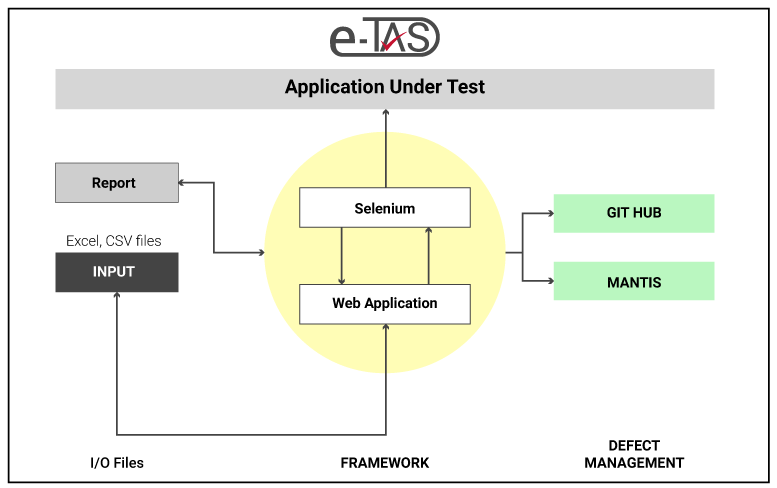Test Automation in Agile Product Development

The ongoing demand for user-friendly, cutting-edge technology business applications has compelled software companies to deliver stable, cost-effective products in shorter time frames. Aiming for extraordinary product speed without compromising product quality is often a challenge for most companies. As a consequence, when it comes to product development, businesses understand the value of test automation in achieving both product quality and a faster time to market. With an inevitable arbitrate between quality and time-to-market, test automation often outperforms conventional testing methods and helps businesses stay ahead of the competition.
Need for Automation Testing
Product creation is a time-consuming process. When it comes to software development, we absolutely cannot ignore testing because it is such an essential part of the process. Though the agile method of product development is a quicker, less expensive, and better approach, it is vital to automate the testing processes, which saves time and offers insight into errors that manual testing methods might not be able to detect. Automation has more tremendous advantages than conventional testing methods, enabling businesses to develop high-quality products faster and with fewer defects. Companies that use agile development methods employ automation testing to handle continuous development and deployment.
Automation Testing Benefits in Agile Development
Automation testing serves as the basis of Agile software development methodology because of the benefits that it offers. Automation enhances the revenue, brand recognition and retention of customers.It aids companies in meeting industry standards, establishing market authority, and ensuring the timely delivery of high-quality software or applications.
Here are some substantial benefits of implementing automation in agile development.
Quicker Go To Market
Automation enhances the overall efficiency of the product development. Since testing is performed at each stage of the agile process, any issues or bugs detected are corrected early. This saves significant time and reduces the software’s time to market. Automated tests are quick to complete and can be repeated any number of times. Automation testing allows for more frequent updates, faster app improvements and enhancements, a shorter product development cycle, and faster time-to-market delivery.
Accelerated Speed & Accuracy
Test automation reduces human errors dramatically, resulting in more accurate test outcomes. Automated test cases are reusable, meaning they can be run several times in the same or different ways. Automation allows test practitioners to focus on more complex, case-specific assessments while automated software performs routine, often redundant, and time-consuming tests. Automation thus reduces time and effort by delivering results more quickly.
Higher Test Coverage & Performance
Automated software tests vastly increase software quality by increasing the scope and depth of testing. It allows for more detailed analysis and evaluation of various software components, which is rarely possible through a manual testing approach. With automated testing, you can quickly build a large number of test cases, even complicated and lengthy ones. It enables you to execute hundreds of automated test cases at once, allowing you to quickly test the app across various platforms and devices. This is something you can’t do if you decide to test the application manually. Furthermore, automatic tests can be performed with little human intervention, resulting in greater resource efficiency.
Cost Reduction
In the long run, automated testing is less expensive because once you’ve developed the test scripts, you can reuse them at any time without incurring extra costs. Although automated agile testing is often seen as an expensive endeavor, the initial investment in automation will pay off quickly. The return on investment is measured by the number of automated tests; the higher the count, the higher the ROI. Furthermore, defect documentation in each sprint and routine repository maintenance contribute to early defect identification, which decreases post-production failures and, as a result, project costs.
Test Automation Challenges
Despite the numerous advantages of an automation framework, implementing test automation is not easy. While there are multiple advantages to product engineering automation, there are numerous challenges when it comes to implementing automation testing in an agile environment. The most significant barrier is the upfront expense, which includes training, tooling, configuring, automating, and so on. Also, legacy applications may not be compatible with newer DevOps and Test Automation tools. Since Open Source tools are widely used for automation, a number of security concerns are raised. As a result, a well-organized test automation process may help mitigate these issues.
Agile practices lead companies to better and more advanced software development. The approach to automation testing in an agile environment is determined by the project’s requirements, as different projects need different automation tools. To get the most out of agile automation testing, we suggest that businesses looking to automate should find a strategic partner with prior experience in product engineering automation to increase their chances of success. One can find many IT service providers who excel in automation testing services, and Estuate is one among them. Consult our experts to learn how to increase efficiency and productivity with a well-thought-out automation strategy.




